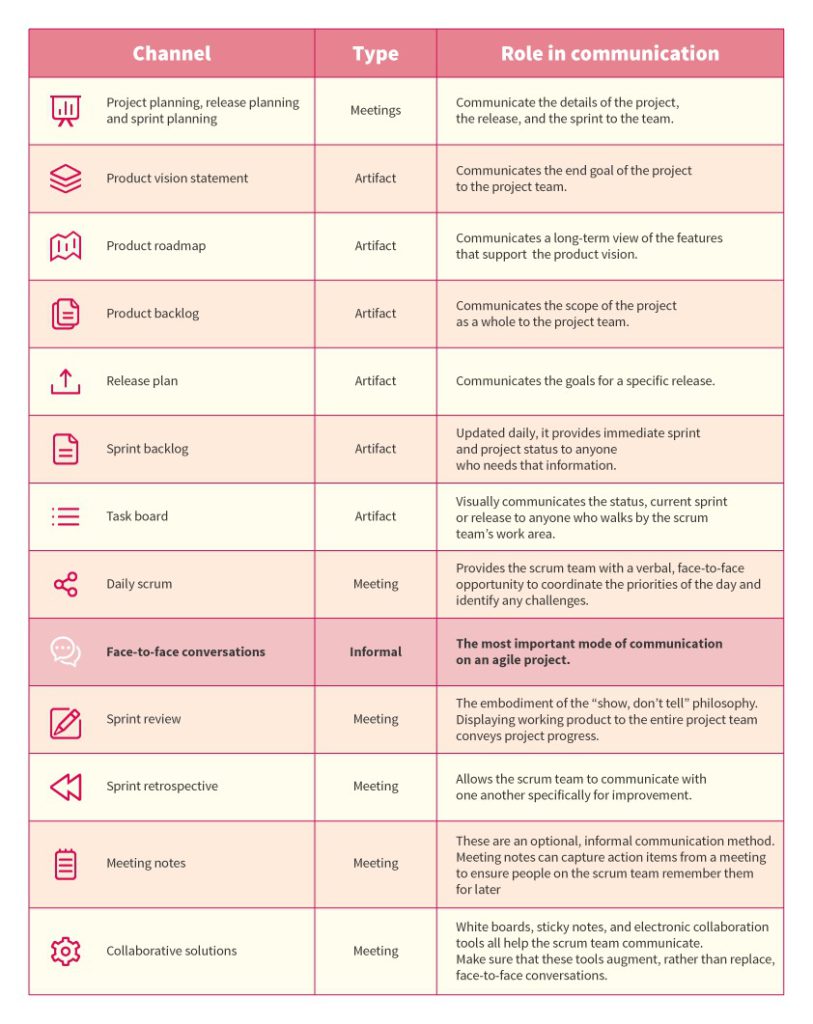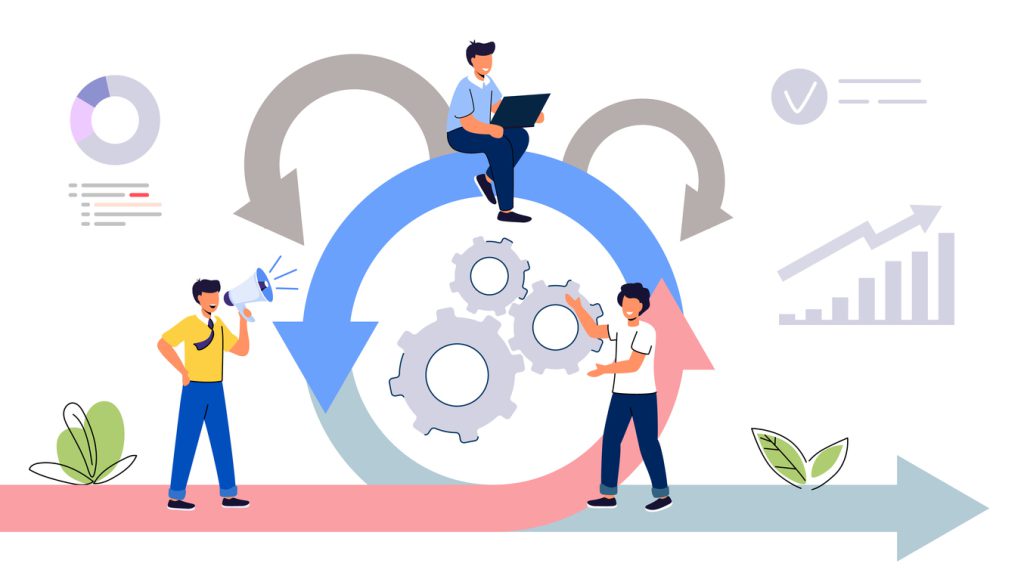Introduction
Communication doesn’t happen by chance. Therefore, it’s essential that everyone on the team understands the communication objectives and protocols. It’s important to be clear about how each function and individual is expected to interact. The general principle is when something needs to be said, say it. The earlier a possible issue is dealt with, the better the chances of recovering from the situation with minimal impact.
Team communication
Designer’s perspective: If you’re a designer who has never worked on an agile project before, it’s worthwhile getting to know the project manager before you start. This is your opportunity to let the project manager know that you’re new to the agile environment and that you’d like to know generally what’s expected of the project team members. Often, a project team consists of members with different agile experience. While you’re getting to know the project manager it’s also worth asking about the experience he has with agile projects. If he does have design and agile project experience, ask him how he intends to include design activities and tasks in the plan. Give him time to explain the process and make notes about any areas of concern.
Project manager’s perspective: If you’re a project manager, spend some time getting to know your designers and understand what their agile experience is. Sometimes it will be necessary to carry out training that will allow people inexperienced in agile projects to understand the rules. If neither you nor the designers have had agile design experience, take some time to understand the tasks and activities that the designers consider critical and invite them to help you plan how to incorporate them into the project.
At the beginning of the project it is necessary to communicate with the entire team about everyone’s roles and expected responsibilities.
Communications methods
Face-to-face conversations are the heart and soul of agile projects. Agile meetings provide a format for communicating in a face-to-face environment. Meetings on agile projects have a specific purpose and duration so that the development team can work rather than spend their time in meetings. Agile artifacts provide a format for written communication that is structured, but not cumbersome or unnecessary.
The table provides a view of the different communication channels on an agile project.

Remember:
Even the best tools need people to use them correctly to be effective. Always!
Agile projects are about people and interactions. Tools are secondary to success.




